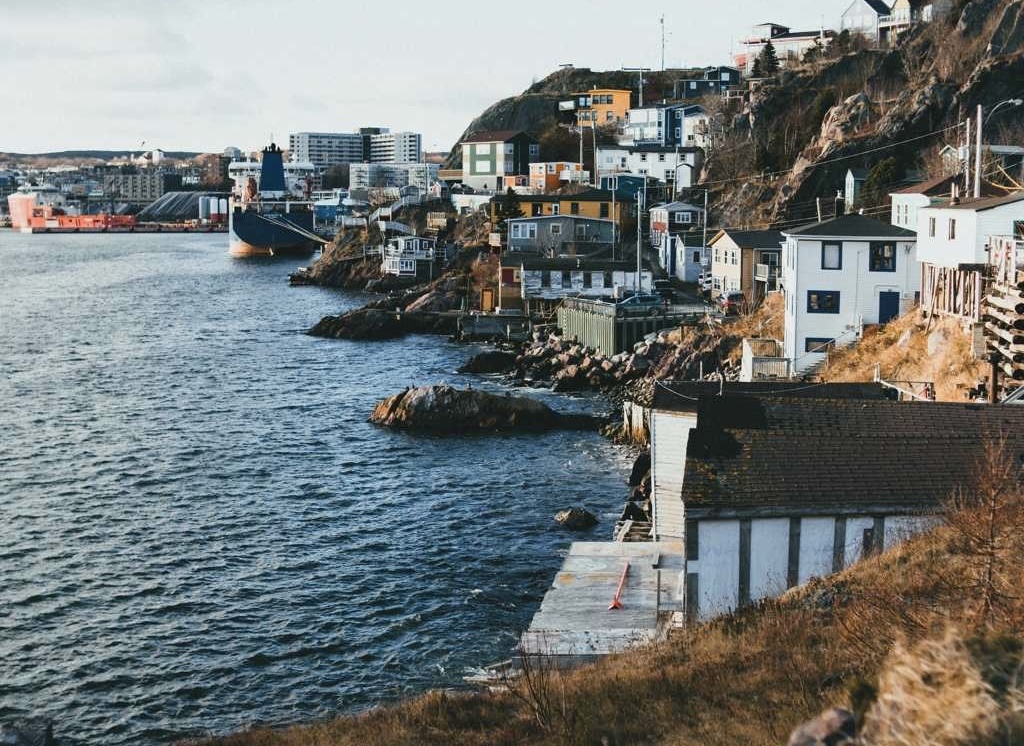Georgia Lote talks about Falmouth’s Maritime homes
Standing along Falmouth’s winding streets, the maritime homes tell a story of a town built on the tides. These weathered cottages and sturdy stone buildings, perched close to the sea, bear witness to centuries of seafaring life. From the fishermen who worked the shores to the merchants and captains who traded across oceans, these homes are more than just dwellings—they are living links to Falmouth’s maritime heritage.
Yet, as modern pressures reshape this historic town, the legacy of these homes faces both celebration and challenge. Gentrification, environmental risks, and shifting community dynamics are transforming the identity of these once-practical dwellings. Their past, present, and future reveal much about how Falmouth’s identity is anchored in its seafaring roots—and the effort needed to preserve it.
Falmouth’s rise as a key port town in the 17th century brought with it a demand for homes tailored to the needs of its growing maritime community. The town’s sheltered harbour became a hub for international trade, naval activity, and fishing, attracting workers, merchants, and their families. Their homes, clustered near the docks, were built for practicality and durability, often reflecting the lifestyle of their inhabitants.
Fishermen’s cottages were typically small and robust, with thick stone walls to withstand fierce coastal winds and small windows to retain warmth. Inside, these homes often featured low ceilings, wooden beams, and basic storage for nets and tools. Larger homes for ship captains or traders were designed with additional features, such as spacious parlours for entertaining and wide windows offering views of the harbour.
Custom House Quay and the Old High Street still bear the hallmarks of these origins. Narrow streets, cobbled paths, and buildings weathered by centuries of coastal winds offer a glimpse into a world where life revolved around the water. Each home tells a story—of families dependent on fishing seasons, ships being loaded with cargo bound for distant lands, and a town whose livelihood was intricately tied to the tides.
Over the years, Falmouth’s maritime homes have undergone dramatic transformations. Where once they housed working-class fishing families or port labourers, many have now been converted into luxury properties or holiday rentals. This shift reflects broader changes in Falmouth’s economy and society as tourism and second-home ownership have reshaped the town.
For some, renovating these homes is a labor of love. Local architect Christopher Smith describes the delicate balance between preservation and modernisation. “The challenge is maintaining the character of the home while making it liveable by today’s standards,” he says. “Original features like beams or fireplaces are often hidden gems, but integrating modern plumbing, insulation, or kitchens requires a lot of care.”
However, this transformation has also sparked concerns. Rising property values and the demand for holiday lets have made it harder for local families to remain in these historic homes. “It’s bittersweet,” says longtime resident Patricia Hopton, who lives in the Bosun’s Chandlery overlooking the harbour. “On one hand, it’s wonderful to see these homes restored and celebrated. But it’s sad to see fewer locals able to afford to stay here.”
For many in Falmouth, maritime homes are more than just buildings—they’re part of the town’s cultural fabric. Annual events like the Falmouth Sea Shanty Festival celebrate this heritage, drawing visitors eager to connect with the town’s seafaring past.
Preservation efforts are underway to maintain this balance. Organisations like the Cornwall Heritage Trust are working to protect historically significant properties, while some homeowners receive grants to help maintain original features. Still, navigating regulations around historic preservation can be a challenge for those looking to renovate.
Falmouth’s maritime homes have endured centuries of storms and salty air, but new threats loom on the horizon. Coastal erosion, rising sea levels, and unpredictable weather patterns are putting pressure on properties near the shoreline.
One particularly vulnerable area is the coastline near Swanpool Beach, where some properties face a heightened risk of erosion. “These homes are often in remote locations along the coast path, where the cost of preventing further erosion would fall on a small number of properties,” explains Tom Mainwaring-Evans, an environmental specialist. While Falmouth’s densely populated areas and key infrastructure—such as the docks, university, and access roads—are likely to be prioritised for protection by Cornwall Council, ongoing monitoring and mitigation efforts are essential. “This isn’t a situation where a single solution will suffice,” Mainwaring-Evans emphasises. “As the climate continues to change, the risk to properties and infrastructure along the coastline must be continually managed to ensure the town’s long-term resilience.”
Efforts to adapt are underway. Coastal defences, such as seawalls and drainage systems, are being upgraded, and some homeowners are exploring innovative ways to make their homes more climate-resilient. This includes reinforcing foundations, installing flood barriers, and using materials that can withstand moisture and salt. However, these solutions come at a cost, leaving some properties—and their owners—at risk.
Despite these challenges, Falmouth’s maritime homes remain a vital link to the town’s history. Their charm draws visitors, their walls hold stories of a hardworking past, and their presence anchors a community shaped by the sea.
For residents like Patricia Hopton, preserving these homes is about more than nostalgia—it’s about honouring a way of life. “These homes are part of who we are as a town,” she says. “They remind us where we came from, and I hope we find a way to keep them standing for generations to come.”
Walking along the harbour today, it’s easy to imagine the lives of those who first built and lived in these homes. Nets drying on stone walls, the smell of salt in the air, and the sound of ships creaking in the dock. These homes are not just relics of the past—they are living symbols of Falmouth’s connection to the sea.
As Falmouth continues to navigate the tides of change, its maritime homes stand as a testament to resilience, tradition, and the enduring spirit of a town forever tied to the water.
